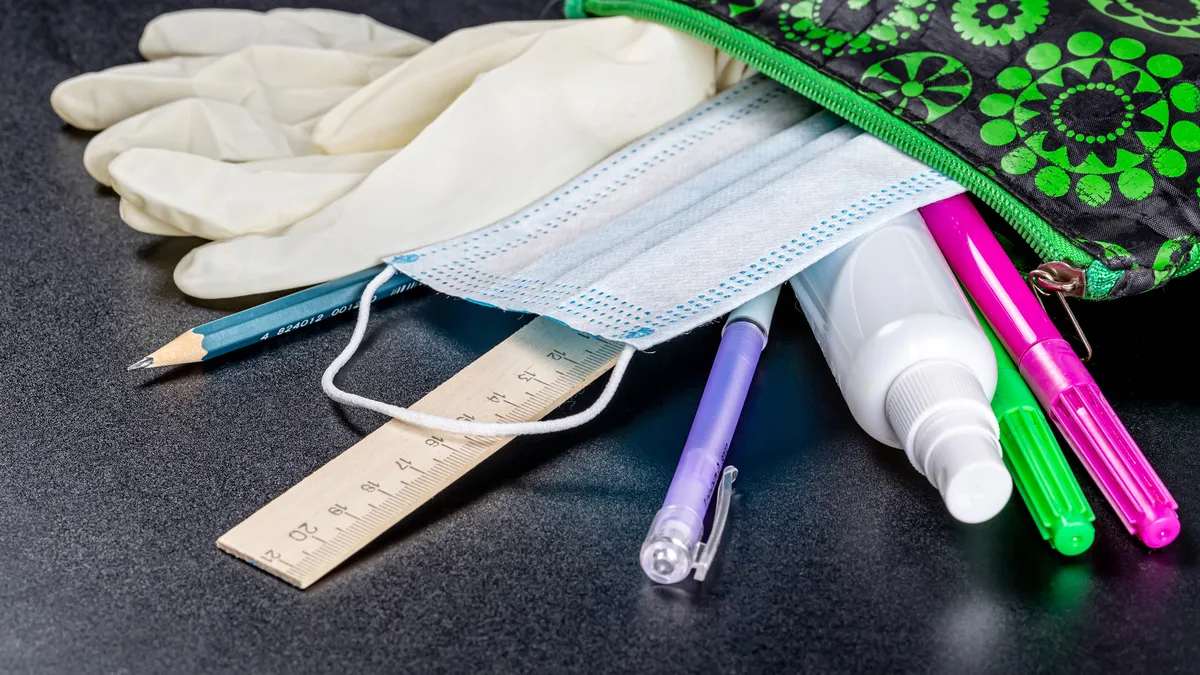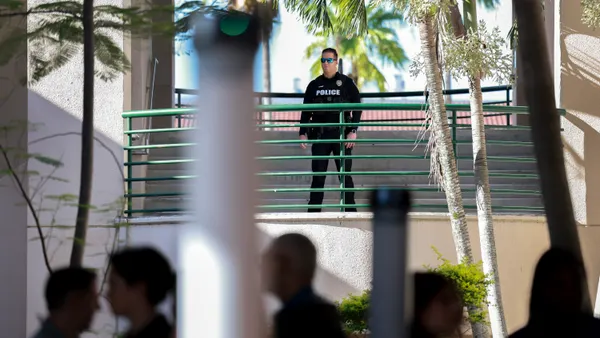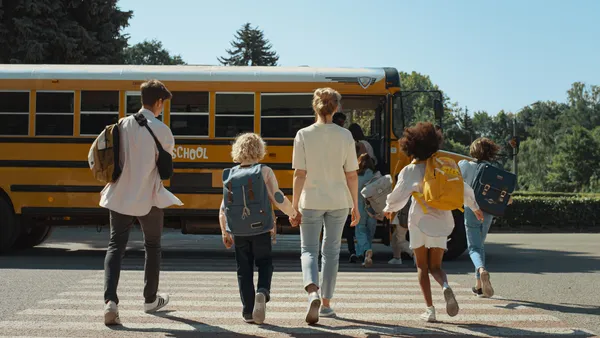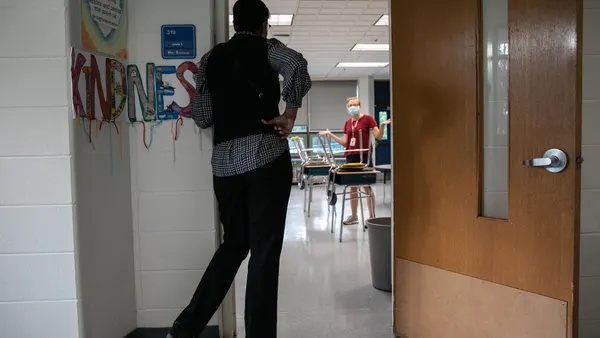Dive Brief:
-
Having pandemic planning processes in place while also recognizing those plans may need on-the-spot adjustments helped two school districts in Florida and Illinois reopen buildings for in-person learning and stay open, said the districts' superintendents during a U.S. Department of Education webinar Wednesday.
-
The superintendents shared their districts' approaches for bus capacity, COVID-19 screening, academic priorities, equitable opportunities, public communications and even how they are planning beyond the 2020-21 school year.
-
The webinar, hosted by the department's National Center on Safe Supportive Learning Environments, is part of a "Lessons from the Field" series that aims to share lessons learned and best practices about educational operations during COVID-19.
Dive Insight:
Victor Simon, superintendent of Gower School District 62, in Willowbrook, Illinois, leads a two-school, Pre-K-8 district that reopened for full-time, in-person learning Aug. 21 and has stayed open even as its community transmission remained high. Simon credits much of the district's success to multiple factors, including letting families choose whether to have their child attend in-person and having a process for COVID-19 point-of-care diagnostic testing and screening.
Those testing and screening protocols have been "an absolute game changer for us, and it's probably even the wrong phrase. It's bigger than that," Simon said. In the first 135 days of instruction, the district has had no evidence of in-school COVID-19 transmission, he said.
The planning to open schools for in-person learning in August was comprehensive and included multiple conversations with staff groups, parents and community members, as well as several drafts to set specific approaches to the plan's various components, Simon said. But there were non-negotiables, including the use of layered mitigation strategies like universal mask-wearing, physical spacing and maximizing instruction flexibility by having teachers simultaneously instruct in-person and virtual students.
The simultaneous instruction may be out of reach for some districts, but it is working in the Gower School District 62 because it allows families to switch from in-person to virtual instruction whenever they want to or need to, Simon said.
In Florida, Diana Greene, superintendent of Duval County Public Schools, in Jacksonville, said her 130,000-student district also opened fully in-person in August with the option for virtual learning. In preparing for this school year, Greene said the district "started with this mindset that we're creating a brand new learning model in an era that is uncommon. There was no playbook to tell us what to do, how to do it and when to do it. So we developed our own playbook."
For example, the district followed guidelines from the Centers for Disease Control and Prevention and from the Florida Department of Education where possible. However, the district also realized it was not possible to reduce class sizes or significantly reduce school bus capacity, said Greene, who was named 2021 Florida Superintendent of the Year by the Florida Association of District School Superintendents.
Instead, the district relied on layered mitigation approaches, giving face coverings to every staff member and student and keeping enough hand sanitizer and personal protective equipment in stock, Greene said.
Additionally, it was not feasible to upgrade school HVAC systems, so the district added desk guards to help reduce COVID-19 transmission. The district also has a COVID-19 testing program for students and staff and has placed a nurse at every school, Greene said.
Most importantly, Greene said, are efforts to provide high-quality instruction for all students, as well as social and emotional supports. This summer, the district is planning robust enrichment and acceleration opportunities for students. Also being planned is a "boot camp" for the 19,000 remote-only students to help reacclimiate them to in-person learning before next fall, Greene said.
The "Lessons from the Field" webinar series, which follows the Education Department's National Safe School Reopening Summit, will run bi-weekly through June with the next sessions planned for mid-April.














